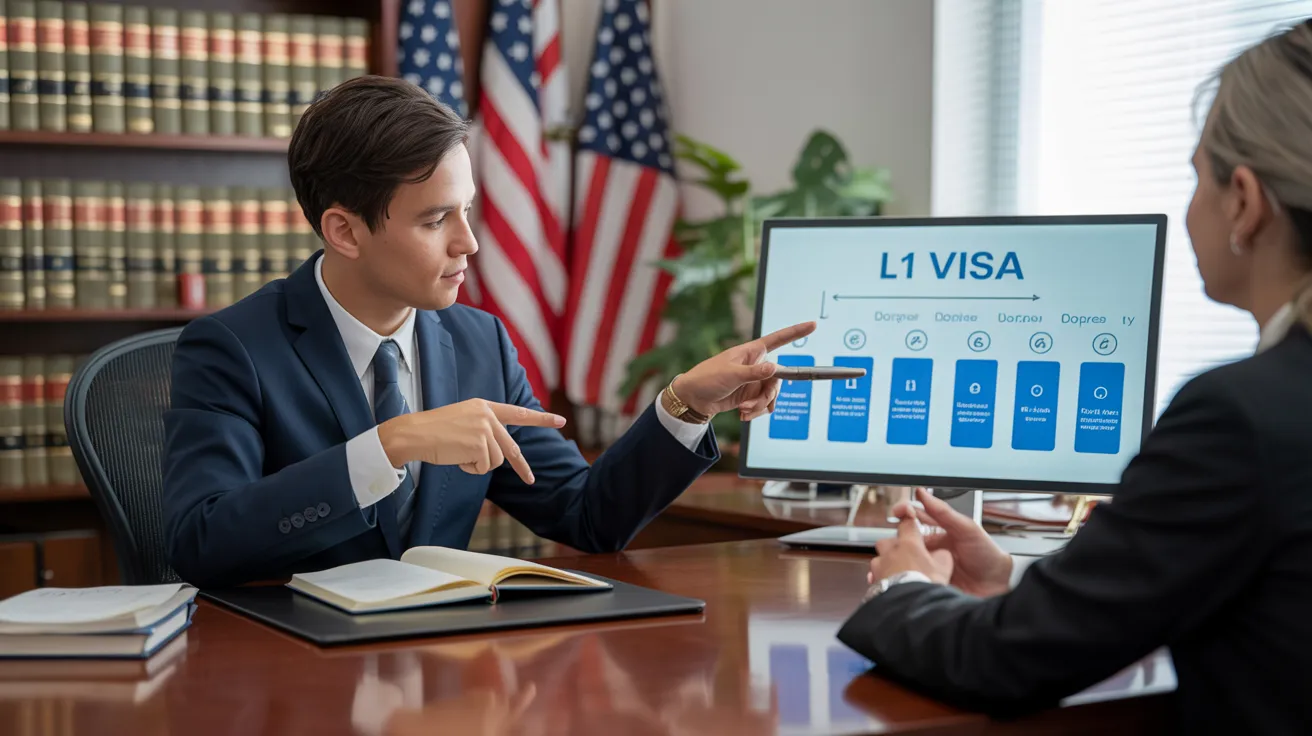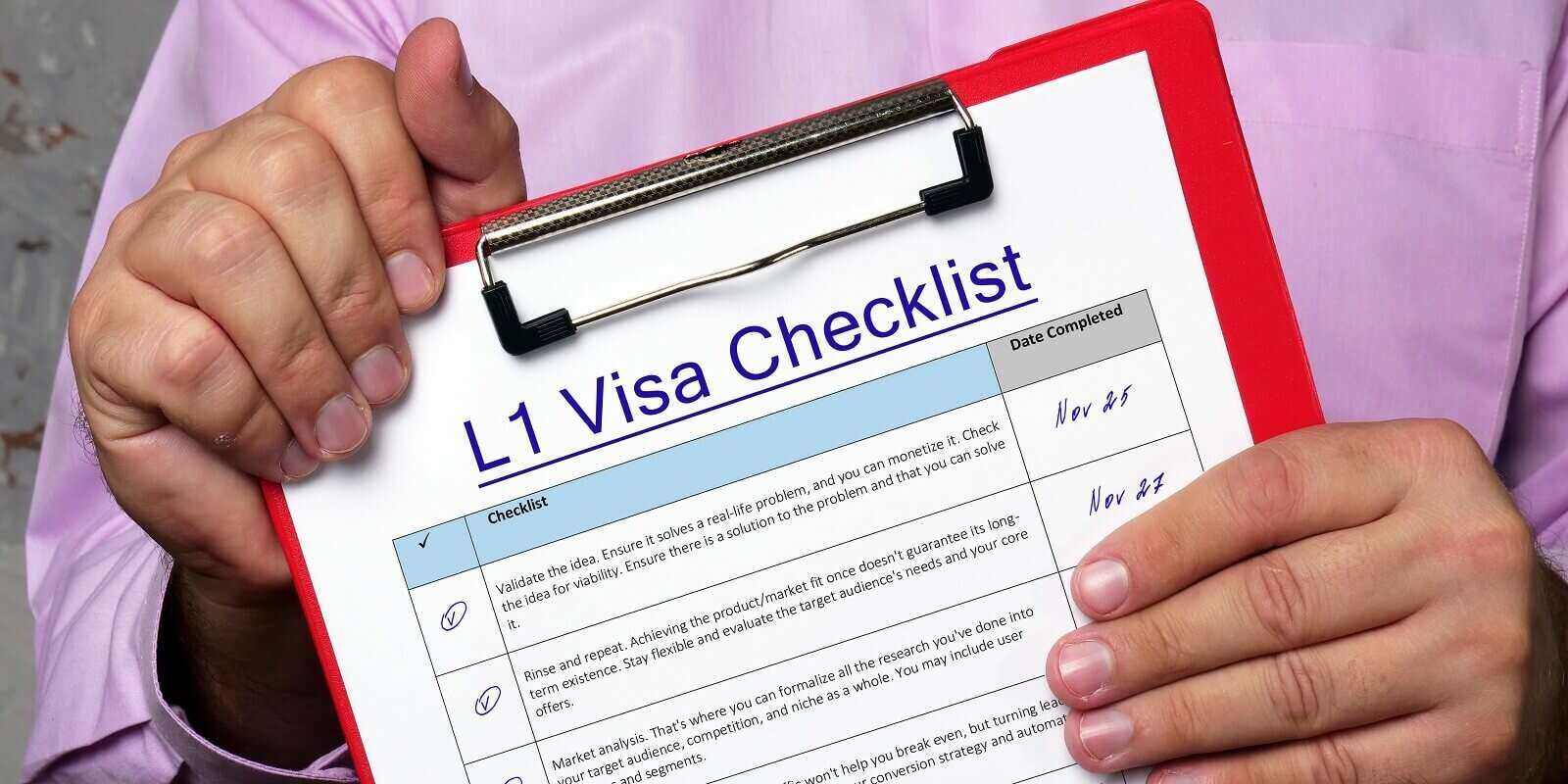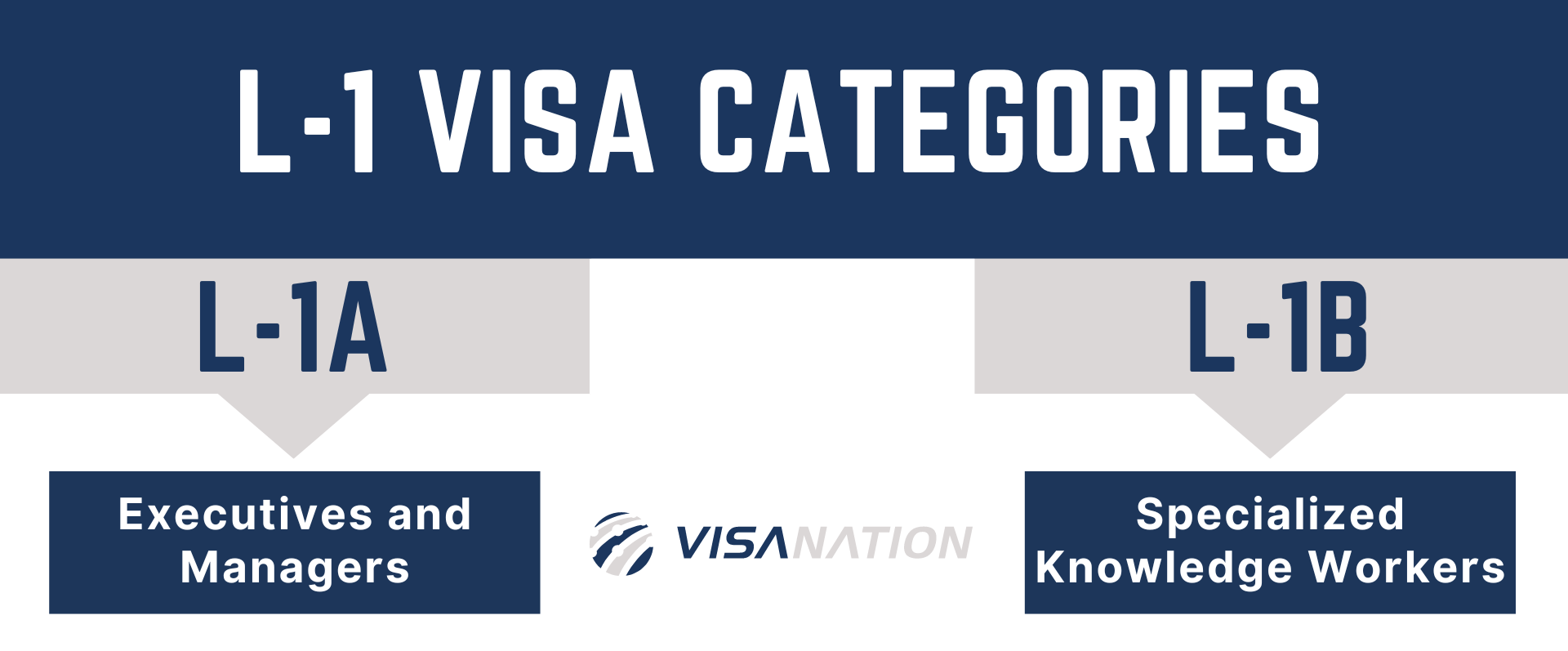Opening Opportunities: A Comprehensive Overview to the L1 Visa Process
The L1 visa procedure offers an essential pathway for multinational companies seeking to transfer essential workers across boundaries. Comprehending the nuances of eligibility requirements, the distinctions between L-1A and L-1B visas, and the details of the application procedure can significantly influence an applicant's success. However, navigating this complex landscape is not without its obstacles, and mindful attention to documents and employer sponsorship is vital. As we discover the crucial elements of this process, the approaches for getting rid of possible challenges will become apparent, exposing exactly how educated preparation can open a world of chances.
Comprehending the L1 Visa
Understanding the L1 visa requires recognizing its importance as an essential device for international firms seeking to transfer knowledgeable staff members between global offices. This non-immigrant visa classification assists in the movement of executives, managers, and specialized understanding employees to the United States, therefore making it possible for organizations to preserve operational continuity and harness worldwide skill successfully. The L1 visa is divided into two key classifications: L-1A for managers and executives, and L-1B for staff members possessing specialized knowledge.The L1 visa serves a vital role in boosting a company's one-upmanship in the global marketplace - L1 Visa. By permitting firms to relocate their key workers, businesses can assure that crucial projects are managed by qualified individuals that are currently aware of the firm's society and operational procedures. This interior transfer system not just cultivates knowledge sharing but likewise promotes advancement and collaboration throughout borders.Moreover, the L1 visa is typically preferred for its fairly uncomplicated application process compared to various other visa groups, as it permits double intent, allowing holders to pursue long-term residency while on a momentary copyright. This function makes the L1 visa specifically appealing for both companies and staff members, as it streamlines the path for competent specialists to establish long-lasting residency in the United States
Eligibility Standards
Qualification for the L1 visa pivots on a number of vital standards that ensure both the worker and the company satisfy specific certifications. This non-immigrant visa is designed for international business to transfer workers from foreign workplaces to united state counterparts.Firstly, the employer should be a qualifying company, that includes a moms and dad firm, branch, associate, or subsidiary of an U.S. service. The firm has to have been doing service for at the very least one year both in the U.S. and abroad. This assures that the business has adequate functional stability and a reputable presence.Secondly, the worker has to hold a supervisory, executive, or specialized understanding position. For L1A visas, the candidate has to show supervisory or executive certifications, while L1B visas concentrate on specialized expertise pertaining to the organization's products, services, or processes. Additionally, the employee needs to have benefited the international entity for at the very least one continual year within the last 3 years before their application.Lastly, the worker's duty in the U.S. must line up with their previous position, guaranteeing that their abilities and expertise are leveraged for the company's benefit.
Kinds of L1 Visas
The L1 visa classification consists of 2 main kinds designed to help with the transfer of staff members within multinational companies: the L1A visa for supervisors and executives, and the L1B visa for workers with specialized knowledge. Each type serves distinct objectives and has details eligibility criteria.The L1A visa is customized for people who hold supervisory or executive positions within a business. This visa allows top-level staff members to transfer to an U.S. branch, subsidiary, or associate of the same organization. Candidates for the L1A visa need to demonstrate that they have actually been employed in a supervisory or executive capability for a minimum of one continual year within the past three years prior to their application. Additionally, this visa uses a longer period of keep, at first granted for three years, with the possibility of extensions for approximately 7 years.In comparison, the L1B visa is planned for specialists with specialized expertise pertaining to the business's items, solutions, or procedures. To certify, applicants should prove that their experience is important to the company and that they have actually helped a minimum of one constant year within the last 3 years in a duty that required this specialized expertise. The L1B visa is initially provided for 3 years, with extensions available for up to five years.Both visa types are vital for companies looking for to enhance their worldwide procedures by leveraging experienced personnel, thereby promoting technology and performance within the united state market.
Application Process
Steering through the L1 copyright process includes several crucial steps that need to be carefully complied with to assure an effective outcome. The process starts with the U.S. employer, that have to initially develop qualification by showing a qualifying connection with the foreign entity and confirming that the worker meets the specific demands for the L1 visa category being sought.Once qualification is verified, the employer starts the process by submitting Form I-129, the Request for a Nonimmigrant Employee, with the U.S. Citizenship and Migration Provider (USCIS) This type must be gone along with by a thorough description of the job responsibilities to be executed, the organizational framework of both the U.S. and foreign entities, and the staff member's credentials. It's essential to validate that all info is accurate and full, as noninclusions or inaccuracies can bring about hold-ups or denials.Upon approval of the I-129 request, the next step includes the worker applying for the L1 visa at a united state embassy or consulate in their home nation. This stage requires the conclusion of Form DS-160, the Online Nonimmigrant copyright, and scheduling a meeting. During the meeting, the candidate needs to present proof sustaining their certifications and the company's petition.After the visa is given, the staff member can enter the United States to operate in the marked role. Generally, careful prep work and adherence per step of the application procedure are necessary for a successful L1 visa outcome.
Required Paperwork

Important Forms Required
Maneuvering the L1 Visa procedure requires mindful focus to the important types and paperwork essential for a successful application. The key type required is the Form I-129, Request for a Nonimmigrant Employee, which need to be finished and sent by the united state company. This form describes the details of the work offer and the qualifications of the employee looking for the L1 Visa.Alongside Form I-129, the applicant will certainly need to total Kind I-539 if accompanying family participants are likewise using for visas. Additionally, the company must give evidence of the qualifying connection between the U.S. entity and the international entity, often demanding the submission of corporate documents such as posts of consolidation or economic statements.Moreover, it is vital to include the L Classification Supplement to Kind I-129, which defines the kind of L Visa being asked for-- either L-1A for supervisors and execs or L-1B for staff members with specialized understanding. Candidates need to guarantee that all forms are authorized and dated suitably, as incomplete submissions can lead to hold-ups or rejections. Appropriately setting up these crucial types lays the structure for a smoother L1 copyright procedure.

Supporting Proof Needs
Sustaining documentation is essential for an effective L1 copyright, as it confirms the insurance claims made in the request. Candidates have to supply a range of files to show eligibility for the visa, which is categorized right into two primary kinds: proof of the qualifying partnership in between the united state and foreign entities and evidence of the applicant's qualifications.To establish the partnership, candidates should send documents such as business business graphes, financial declarations, and proof of possession. These papers verify that the international business has a certifying connection with the united state employer, whether as a moms and dad business, subsidiary, branch, or affiliate.For the candidate's credentials, essential records include a detailed employment letter from the foreign employer, detailing the applicant's task title, responsibilities, and period of employment. Additionally, instructional credentials, such as levels and diplomas, need to be given to verify the candidate's proficiency in the relevant area.
Employer Sponsorship Documents

Usual Difficulties
Steering the L1 visa procedure offers a number of typical difficulties that candidates ought to understand. Secret issues usually include rigid documentation needs, potential hold-ups in processing times, and the need for stringent lawful compliance. Comprehending these obstacles can aid applicants better prepare and alleviate threats during their copyright trip.
Documentation Needs
The L1 copyright process commonly offers significant difficulties connected to documents needs. Applicants should offer considerable paperwork to establish qualification, which can bring about complication and prospective hold-ups. Secret papers consist of proof of a certifying relationship between the united state and foreign company, proof of the candidate's work background, and comprehensive info regarding the job role in the U.S.One usual obstacle is gathering enough proof to show the nature of L1 Visa the qualifying partnership. Companies usually struggle to present clear business graphes or economic statements that illustrate the connection between the entities. Furthermore, making sure that letters of assistance from companies precisely show the applicant's work responsibilities and credentials is essential, as obscure descriptions can lead to denials.Another issue emerges from the requirement for thorough task summaries that line up with the L1 visa classifications. Applicants have to verbalize not only their current duty yet likewise their supervisory or customized knowledge responsibilities plainly. This necessitates a detailed understanding of both the applicant's setting and the regulative language used in L1 applications.
Processing Dead Time
Experiencing delays in processing times is an usual obstacle faced by L1 visa applicants, typically resulting in irritation and uncertainty. A number of variables contribute to these delays, consisting of high application quantities, raised examination of applications, and management backlogs within the united state Citizenship and Immigration Services (USCIS) Candidates may discover that processing times can vary considerably depending on the service facility handling their application, as each center has its very own workload and effectiveness degrees. Additionally, the intricacy of the applicant's situation, such as the need for considerable paperwork or clarification, can additionally extend wait times.In some instances, problems associated with the candidate's existing migration condition or previous visa history may likewise cause extra hold-ups, as USCIS might require additional review or information. It is essential for prospects to continue to be proactive during this duration, maintaining open communication with their companies and lawful representatives to attend to any kind of potential worries promptly.Understanding these handling time obstacles can assist L1 visa candidates plan for feasible delays and alleviate the influence on their shift and profession plans. Persistence and persistance are vital merits in navigating this detailed process.
Legal Compliance Issues
Lots of L1 visa candidates come across legal conformity concerns that can complicate their trip towards acquiring the visa. Comprehending and sticking to the details laws established by the united state Citizenship and Migration Provider (USCIS) is essential. Common challenges include demonstrating the qualifying relationship between the foreign and united state companies, as well as verifying that the candidate has the requisite specialized knowledge or managerial capacity.Additionally, applicants need to give thorough documents outlining their task tasks, corporate framework, and economic practicality of the united state entity. Insufficient or unreliable documents can lead to delays or even rejections. Employers must additionally guarantee that they adhere to labor laws, including wage and working condition standards, which can influence visa eligibility.Another usual concern includes preserving compliance with the terms of the visa as soon as approved. Adjustments in employment standing, job obligations, or company framework can demand amendments to the visa, which if not addressed without delay can result in lawful issues. Because of this, remaining informed regarding compliance demands and looking for legal counsel when required is vital to browse the complexities of the L1 visa process efficiently.
Tips for Success
Success in the L1 copyright process frequently rests on thorough prep work and attention to information. To improve your chances of authorization, start by completely recognizing the qualification needs for both the L1A and L1B visa classifications. Review whether your position at the business certifies as supervisory, exec, or specialized understanding, as this classification notably affects your application.Next, collect extensive paperwork that confirms your cases. This consists of business charts, thorough job descriptions, and evidence of the business's functional framework. Clear and concise evidence of the qualifying partnership in between the united state entity and the international entity is vital. Validate that all documents are organized realistically and provided in an expert way, as this reflects your commitment and severity concerning the application.Engage the solutions of a knowledgeable migration lawyer that specializes in L1 visas. Their proficiency can verify indispensable, leading you with complex policies and ensuring that all paperwork abides with existing regulations. In addition, get ready for the interview by exercising solution to typical inquiries and being all set to review your function and payments to the firm extensive.
Regularly Asked Inquiries
Can Family Members Accompany the L1 Visa Owner?
Yes, relative of L1 visa holders, including spouses and single youngsters under 21, can accompany the main visa holder. They might also obtain L2 visas, which enable them to stay in the USA.
The Length Of Time Can I Remain On an L1 Visa?
The L1 visa permits preliminary remains of approximately 3 years, with the possibility of expansion. L1A visa owners may remain for an optimum of seven years, while L1B visa holders can remain for 5 years.
Can L1 Visa Holders Obtain an Environment-friendly Card?
Yes, L1 visa holders can request a copyright. L1 Visa Requirements. They might go after long-term residency via employment-based classifications, typically calling for sponsorship from their employer, given they satisfy the required credentials and documents requirements
What Takes place if My L1 copyright Is Refuted?
If your L1 copyright is rejected, you may obtain a notification detailing the factors for denial. You can seek to appeal the decision, reapply, or check out different visa options based upon your scenarios.
Are There Any Type Of Traveling Restrictions With an L1 Visa?
An L1 visa usually permits international traveling; nonetheless, re-entry to the united state is contingent upon keeping valid condition. Travelers ought to ensure conformity with visa problems to stay clear of issues upon return
Conclusion
